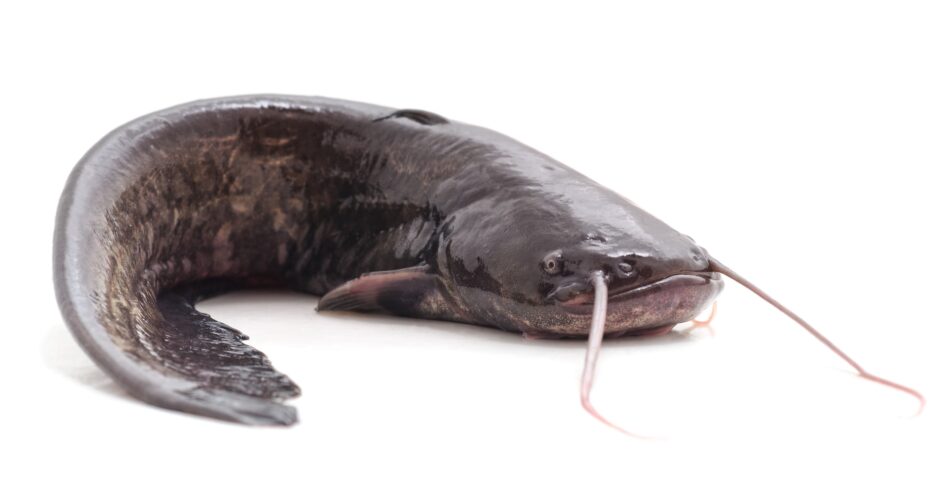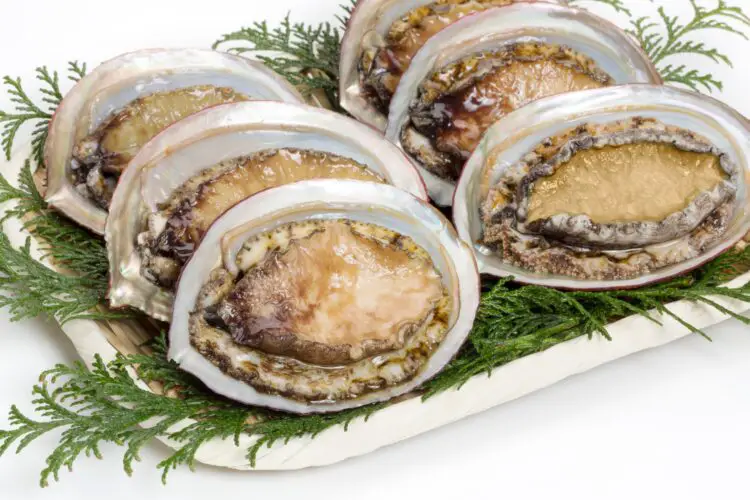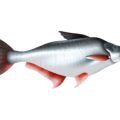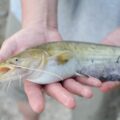Catfish and abalone belong to distinctly different categories within the aquatic ecosystem. Catfish are a diverse group of ray-finned fish known for their barbels, which resemble a cat’s whiskers. They inhabit freshwater environments around the world and are recognized for their bottom-feeding habits. In contrast, abalone are marine snails, residing within the phylum Mollusca. This group is characterized by their ear-shaped shells, which house a soft-bodied creature inside.
Distinguishing between catfish and abalone involves understanding their habitats, physical characteristics, and roles in the ecosystem. Catfish are often identified by their scaleless skin and variety of sizes, adapting to rivers, lakes, and ponds. Their diet primarily consists of smaller fish, insects, and plant material, playing a crucial role in controlling the population of certain species. Abalone, on the other hand, are found clinging to rocky substrates in coastal waters where they graze on algae. Their unique shells, with an iridescent interior known as mother-of-pearl, are not only a defense mechanism but also a coveted item in jewelry and decorative arts.
This article examines the key differences that set these two creatures apart. By exploring their anatomical features, ecological habitats, and significance to humans, we can gain a clearer perspective on their unique niches within aquatic life. Understanding the distinctions between catfish and abalone is essential for environmental awareness and maintaining biodiversity in aquatic systems.
Basic Taxonomy and Species Classification
To understand the difference between catfish and abalone, one must examine their distinct classifications in the taxonomy of species.
Defining Catfish and Abalone as Species
Catfish are a diverse group of ray-finned fish known for their whisker-like barbels which resemble a cat’s whiskers. They belong to the order Siluriformes. In contrast, abalone are sea snails, part of the class Gastropoda, and are recognized for their ear-shaped shells and pearl-producing ability.
Catfish:
- Kingdom: Animalia
- Phylum: Chordata
- Class: Actinopterygii
- Order: Siluriformes
- Species Examples: Channel catfish (Ictalurus punctatus), Blue catfish (Ictalurus furcatus)
Abalone:
- Kingdom: Animalia
- Phylum: Mollusca
- Class: Gastropoda
- Species Examples: Red abalone (Haliotis rufescens), Green abalone (Haliotis fulgens)
Key Families: Ictalurus and Haliotidae
The family Ictaluridae includes many species of catfish, with the genus Ictalurus being prominent. This genus includes species commonly found in freshwater environments of North America.
- Notable Ictalurus Species:
- Ictalurus punctatus (Channel catfish)
- Ictalurus furcatus (Blue catfish)
The family Haliotidae comprises all abalone species, known for their unique shell structure and marine habitat. The thick, muscular foot of the abalone enables it to cling tightly to rocky surfaces.
- Notable Haliotidae Characteristics:
- Shell with a row of respiratory pores
- Interior lined with mother-of-pearl (nacre)
Both families represent a significant ecological and economic value, each adapted to their respective environments – freshwater for catfish of the Ictalurus genus and saltwater for the abalone species within Haliotidae.
Physical Characteristics
Catfish and abalone exhibit distinct physical features based on their unique adaptations to their environments. These differences can be seen in their color variations, size and shape, and body structures including shell composition.
Color Variations
Catfish range in color, often displaying hues of brown, black, or grey, which may be mottled to help them blend into their surroundings. The coloration of catfish is typically uniform and lacks the iridescence found in many sea creatures. On the other hand, abalones have a more diverse palette, with colors that can include blue, green, pink, or red. The inner surface of their shell, lined with nacre or mother-of-pearl, exhibits an iridescent sheen, reflecting a spectrum of colors.
Size and Shape
Catfish vary widely in size, with some species remaining small while others, like the Giant Mekong catfish, become quite large, reaching several feet in length. The shape of a catfish is often elongated with a flattened ventral side, featuring a rounded or pointed head. Abalones, in contrast, are distinguished by their flat, ear-shaped body, which adheres closely to rocky surfaces. They are generally smaller when mature, with most species averaging from 5 to 10 inches in length.
Body Structures and Shell Composition
Among body structures, the catfish’s most notable feature includes barbels or whisker-like appendages near its mouth, aiding in sensory perception. Their bodies are typically smooth, with some species possessing raised bony plates for protection. Abalone shells are made of calcium carbonate and strengthened by a layer of nacre, which provides durability and resilience. The shell’s structure incorporates a row of respiratory pores along the outside edge of the shell, while the abalone’s muscular foot clings to surfaces and allows it to move.

Habitat and Distribution
Catfish and abalone inhabit distinctly different environments within the aquatic world. Their distribution is largely influenced by these habitat preferences and extends across various continents.
Preferred Environments
Catfish are freshwater species that thrive in various aquatic habitats such as rivers, lakes, and streams. They generally prefer shallow waters where they can find ample cover and food sources. The depth and current of the water in their habitats can vary, with some species adapted to fast-flowing rivers, while others exist in still water bodies.
Abalones, in contrast, are marine mollusks that inhabit coastal waters. They are often found clinging to rocks or hiding in crevices in shallow water, usually no deeper than 20 meters. Abalones require environments with strong wave action which brings in nutrient-rich waters crucial for their sustenance.
Geographical Distribution
Catfish are widespread and are found in various regions:
- North America: Predominately in the freshwater bodies of the United States, with numerous species endemic to the region.
- Mexico: Supports a diverse range of catfish species in its river systems.
- Africa: Home to several species, particularly in regions like South Africa where freshwater ecosystems are abundant.
Abalone species have a more concentrated distribution in colder waters:
- North America: Specifically, the state of California where species such as the red abalone are found.
- Australia: Hosts a variety of abalone species along its extensive coastline.
- South Africa: Another hotspot for abalone, especially the perlemoen, which is indigenous to the region.
- Japan: The waters around Japan are also known for their abalone, which are highly prized in the culinary world.
The geographic distribution of both catfish and abalone is closely linked to their habitat preferences, with catfish dominating freshwaters, while abalones are spread across select marine coasts with the proper living conditions.
Diet and Feeding Habits
Catfish and abalone are species with distinct feeding habits, pivotal for their growth and survival. Each relies on various food sources and employs different feeding mechanisms—adaptations that reflect their environmental niche and lifestyle.
Typical Food Sources
Catfish: Catfish primarily consume a protein-rich diet consisting of:
- Invertebrates: such as worms and aquatic insects.
- Fish: smaller fish and, occasionally, dead fish matter.
- Algae and plant material, when other food sources are scarce, exhibiting their opportunistic nature.
Abalone: Abalone feed on a diet mostly composed of:
- Algae: including both microalgae and macroalgae, with a strong preference for kelp and other brown algae.
- Invertebrates: are a less common food source for abalone as they mainly subsist on algae.
Feeding Mechanisms
Catfish: They employ several feeding strategies:
- Barbels: They use whisker-like barbels around their mouth to detect food by touch in murky waters.
- Suction: A swift suction method is oftentimes used to capture prey.
Abalone: Their feeding process involves:
- Radula: Abalone have a specialized tongue-like structure, the radula, embedded with rows of tiny teeth to scrape algae off surfaces.
- Movement: They slowly glide on their muscular foot across rock surfaces to access algal food sources.
Reproduction and Lifespan
Catfish and abalone exhibit distinct reproductive and lifespan characteristics that are influenced by their respective environments and biological makeup.
Maturity and Reproductive Cycles
Catfish: These fish typically reach sexual maturity at different times based on species; however, most breed once they are about 2-3 years old. Abalone: In contrast, abalones may take from 3 to 8 years to reach sexual maturity, greatly depending on the water temperature and species. Their reproductive cycles also differ, with catfish breeding during specific seasons while abalones can spawn multiple times a year in the right conditions.
Eggs and Offspring Development
- Catfish: They lay numerous eggs, often in the thousands, which hatch within a week. The young are called fry and are dependent on their yolk sac before they start feeding independently.
- Abalone: These marine mollusks release eggs and sperm into the water, resulting in external fertilization. Fewer in number, an abalone may release millions of eggs in a lifetime, yet a small percentage develop successfully. Larval abalones, or veligers, are free-swimming for a few days before settling onto a surface where they mature into their adult form.
Conservation Status and Challenges
The conservation status of catfish and abalone differs significantly, with particular species of each facing varying degrees of challenges. White abalone, for instance, is critically endangered, while certain catfish populations are also under threat.
Endangered Species and Population Declines
White Abalone (Haliotis sorenseni): Listed as critically endangered, their populations have plummeted by approximately 98% since the 1970s. The species has the notoriety of being the first marine invertebrate to be listed under the Endangered Species Act in the United States in 2001.
Catfish Species: Varies, with some species categorized as of Least Concern and others more vulnerable due to specific environmental factors contributing to declining populations.
Threats to Survival: Overfishing and Habitat Loss
Overfishing:
- White Abalone: Has suffered greatly from overfishing, particularly in the 1970s which led to the catastrophic decline in their numbers.
- Catfish: Some species are experiencing population pressures due to unsustainably high levels of commercial fishing.
Habitat Loss:
- White Abalone: They also face the challenge of habitat destruction, further complicating recovery efforts and leading to limited reproductive success in the wild.
- Catfish: Development, pollution, and alterations to riverine systems can lead to significant habitat degradation affecting various species.
Commercial Importance and Aquaculture
Catfish and abalone have unique places in global aquaculture and commercial fishing, contributing significantly to culinary markets and trade.
Fishing and Farming Practices
Catfish are predominantly farmed using intensive aquaculture methods. They thrive in freshwater ponds where they are raised in controlled environments, ensuring efficient growth and safety from contaminants. Farming catfish is common in regions such as Southeast Asia and the Southern United States, where it has evolved into a refined and sustainable practice. In contrast, abalone farming requires marine aquaculture techniques, including sea-based cages or land-based tanks with circulating sea water. Abalone farming is a meticulous process due to the species’ slower growth rate and higher maintenance requirements.
Economic Value and Culinary Use
- Catfish: High in demand, especially in Southern cuisine, catfish are considered a staple in many American diets and are also exported globally.
- Delicacy: While not typically classified as a delicacy, catfish is prized for its versatility and flavor.
- Trade: A significant commodity in domestic and international markets, catfish farming is a thriving industry, contributing to the local economies where it’s practiced.
- Abalone: This marine snail is a highly regarded delicacy, particularly in East Asian cuisine, with a corresponding higher market value.
- Delicacy: Their tender flesh and rich, savory taste make them a sought-after ingredient in luxury dishes.
- Trade: Due to overfishing, wild abalone has become scarce, making farmed abalone a crucial part of the fisheries industry. It has a notable impact on international trade, especially in countries like China, Japan, and South Korea.

Human Interaction and Cultural Significance
Both catfish and abalone have had distinctive relationships with human societies throughout history, marked by their roles in traditions, culinary uses, and efforts in sustainability.
Historical Context and Domestication
Catfish have been captured and consumed for centuries, particularly in regions where they are native, such as North America, Africa, and parts of Asia. Traditionally, they played a significant role in local cuisines and cultural practices. The domestication of catfish, particularly species like the channel catfish, began as a means to provide a consistent food source and has since developed into a substantial portion of the aquaculture industry.
Farmed abalone, on the other hand, are a more recent venture. Originating from the practice of ormer harvesting along coasts, abalone farming began in the 20th century as wild populations declined. This domestication process was initiated to meet the high demand for abalone, especially in East Asian cultures where it’s considered a delicacy and is often associated with traditions and festive celebrations.
Current Trends and Sustainability
Regarding current trends, catfish remain popular in global aquaculture due to their adaptability and rapid growth rates. Sustainable farming practices are being developed to minimize environmental impact, such as recirculating aquaculture systems that reduce water usage and waste.
In sustainability efforts, farmed abalone has gained prominence as a solution to overfishing and poaching of wild populations. The success of abalone farming not only preserves the species for future generations but also supports local economies. Sustainable farming techniques, such as land-based tank systems and sea ranching, are employed to maintain the balance between demand and ecological preservation.
Anatomical and Biological Comparisons
Catfish and abalone are distinct not only in their habitats but also in their anatomical structures and biological features which influence their survival strategies.
Comparative Anatomy of Catfish and Abalone
Catfish possess a set of barbels that resemble whiskers around their mouth, which function as sensory organs. They have an elongated body, covered with skin that is either smooth or armored with bony plates. In contrast, abalone are mollusks with a single shell and a muscular foot used for movement. They possess an epipodium, a fringe-like structure around the foot, and tentacles primarily for sensory functions.
The respiratory system of catfish consists of gills housed within a gill cavity; each gill has a gill arch, filaments, and rakers that extract oxygen from water. Abalone, on the other hand, breathe through gills as well, which are nestled within a groove in their body, beneath the shell edge.
| Catfish | Abalone |
|---|---|
| Barbels for sensory perception | Tentacles for sensory perception |
| Bony plates or smooth skin | Single shell with external structure |
| Gills within cavity | Gills under shell edge |
| Elongated body | Muscular foot for movement |
Biological Adaptations and Survival Strategies
Catfish have developed a variety of reproductive strategies, reaching sexual maturity at different ages and sizes, depending on their species. They often inhabit the bottoms of water bodies and are known for their adaptability to a wide range of environments.
Abalone, with their strong muscular foot, adhere firmly to rocky surfaces to avoid being dislodged by predators or strong currents. They use their radula, a structure comparable to a tongue with tiny teeth, for feeding on algae. The development of their shell provides protection from predators.
Both catfish and abalone exhibit unique biological adaptations that enable their survival. Catfish may have taste receptors over their body, allowing them to detect food in murky waters. Abalones rely on their shell for defense, and their grip on surfaces as a primary survival mechanism.
- Catfish possess diverse strategies for reproduction and can inhabit various environments.
- Abalone use their radula for feeding and their hard shell for protection.
- Strong adaptation traits mark the survival of both catfish, with sensory adaptability, and abalone, with physical endurance against environmental challenges.











